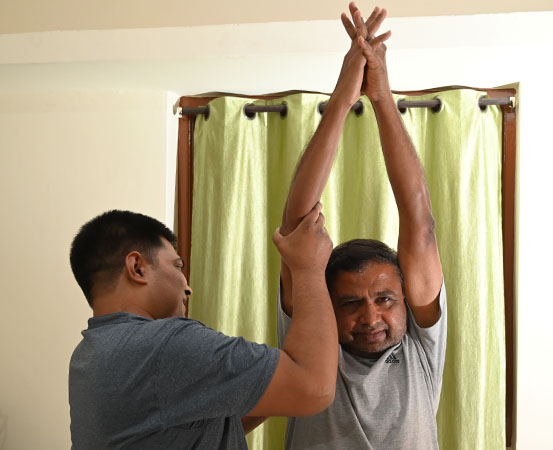
A group of four muscles and tendons constitute the rotator cuff muscles which hold up the shoulder joint and provide stability to it. This set of muscles — subscapularis, infraspinatus, teres minor and supraspinatus — facilitates the movement of the shoulder in all directions.
An onset of pain in the shoulder joint, especially during overhead hand movement or towards the end of a range of motion of the shoulder joint, could be rotator cuff tendonitis (or shoulder tendonitis or shoulder impingement), a common condition.
Rotator cuff tendonitis, which is the inflammation of the tendons that make up the rotator cuff, can hit anyone — from older people to youngsters, and from active sportspersons and professional athletes to fitness enthusiasts and those who lead a sedentary life.
While it can be managed and treated with rest and physiotherapy, surgical intervention is required in severe cases. Surgery is seen to be effective in patients who have reported persistent or worsening of symptoms even after four to six months of non-operative treatment modalities.
Causes of rotator cuff tendonitis
Overuse of tendons, faulty biomechanics and bad posture can all contribute to the inflammation of the tendons, causing rotator cuff tendonitis.
“Overuse is one reason, but faulty mechanics can also lead to tendonitis even if [the tendons] have not been overused,” says Mohammad Rameez, physiotherapist at the Highland Hospital, Mangalore, Karnataka. “Faulty mechanics means that if the subacromial space [between the humerus bone of the upper arm and the acromion bone of the shoulder] is less, then the tendons get impinged, leading to tendonitis. This also depends on the shape of the acromion which results in less subacromial space. Then there is the faulty scapular shape called scapular dyskinesis, where the scapula [shoulder blade] is not in proper position, resulting in tendons getting strained.”
Faulty mechanics can be genetic (from birth) or due to postural issues.
“If a person is, say, working on a computer for long hours, then the scapula will be rounded and remain protracted for long,” says Rameez. “More protraction means a reduction in subacromial space. Sometimes it is also seen in women who work in the kitchen for long hours. Diabetes is another trigger.”
Rotator cuff tendonitis is seen among athletes who do repetitive overhead activities like fast bowling in cricket or playing basketball. Sleeping continuously on one side, which puts the load on one shoulder, can also cause it as the scapula remains in a faulty position.

Treatment for rotator cuff tendonitis
The initial symptoms of shoulder tendonitis will be pain in the deltoid area during overhead movement and at the end range of hand movement. (The deltoid muscle forms the rounded contour of the human shoulder.) If ignored, the pain will be felt even while resting. Over time, it could lead to partial tear of the rotator cuff tendons. In case of partial tears, anti-inflammatory painkillers or topical pain relievers are prescribed to relieve pain.
“Regular physiotherapy sessions are needed where initially reduction of pain is done and then the scapula is set,” says Rameez, explaining the treatment modalities for rotator cuff tendonitis. He adds that surgery is needed if the partial tear progresses to full tear.
“As a precaution people should do rotator cuff exercises and keep the scapula in a retracted position where the approach of the shoulder blade should be towards the spinal column,” says Rameez. “This needs to be done at regular intervals. Also keep in mind that those who are sedentary should not become hyperactive suddenly as it could also lead to strain on the rotator cuff and trigger tendonitis.”
Takeaways
- Rotator cuff tendonitis or shoulder impingement is the inflammation of the tendons of the muscles that make up the rotator cuff.
- The condition is caused by overuse and faulty biomechanics due to genetics or postural issues.
- Physiotherapy and, in extreme cases, surgery are used to treat shoulder tendonitis.

















